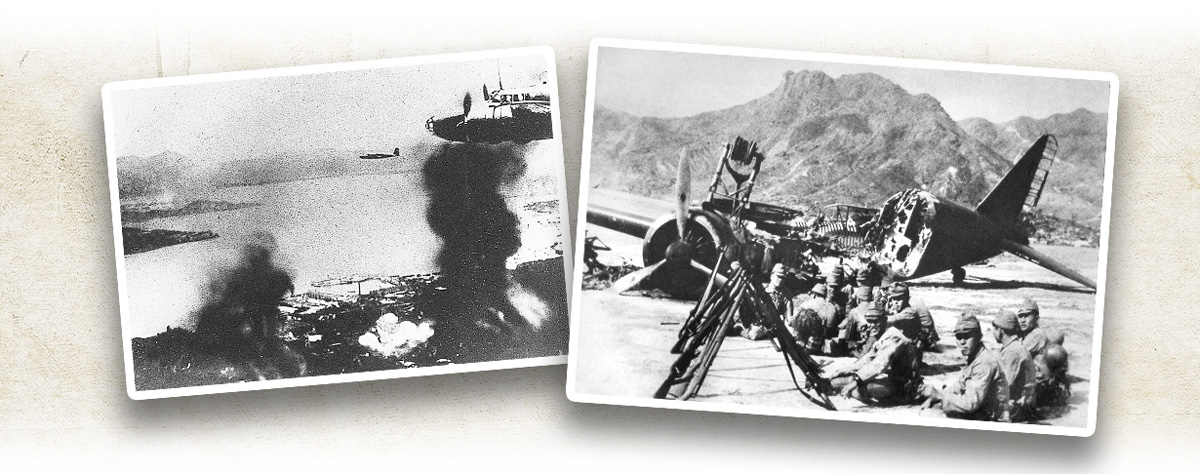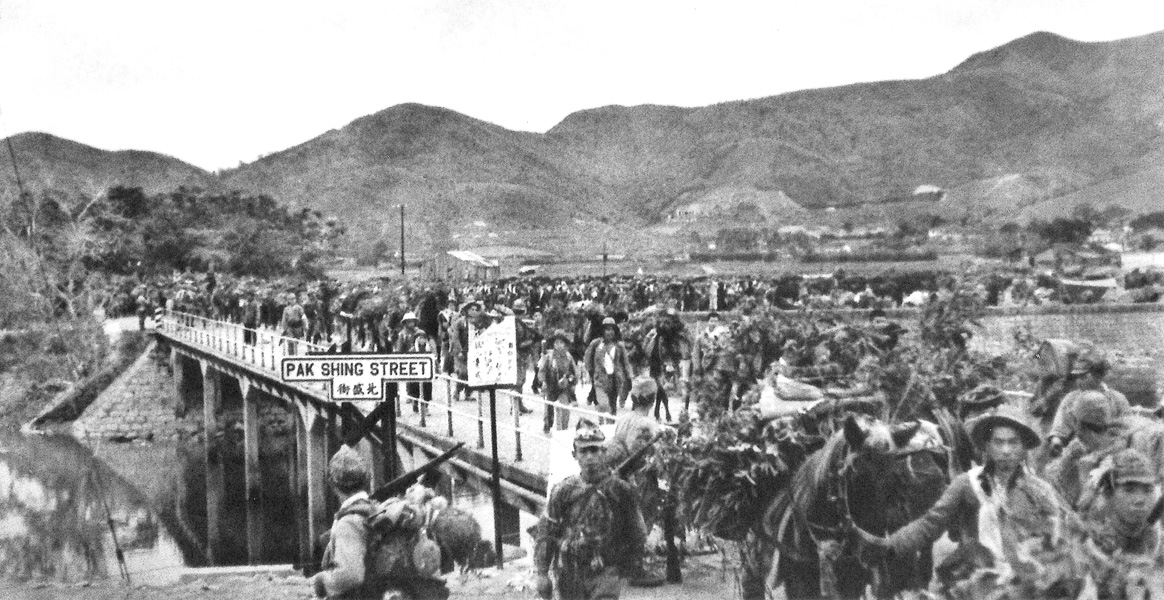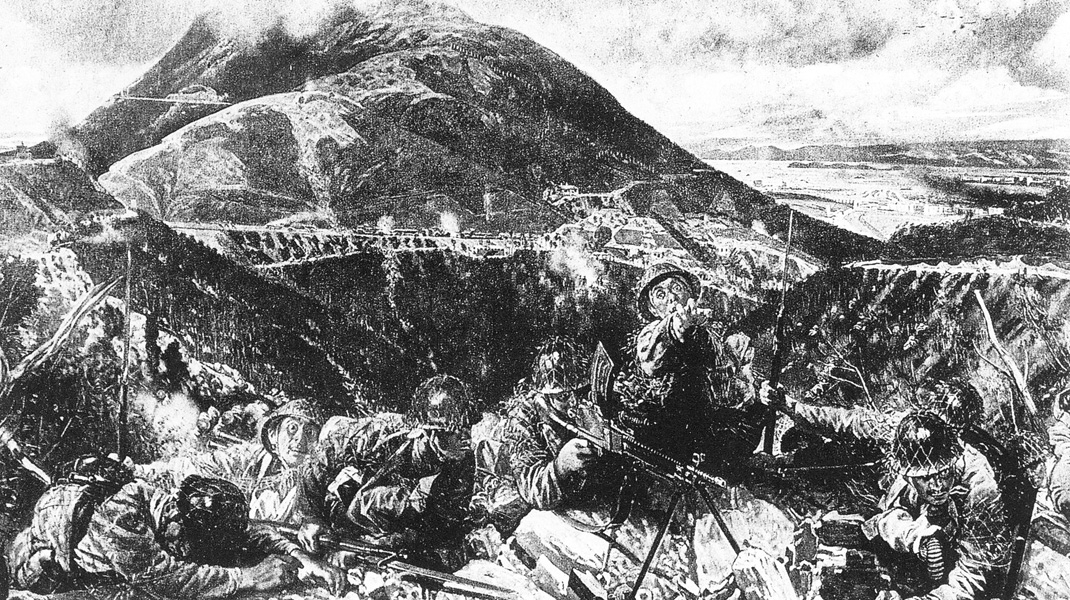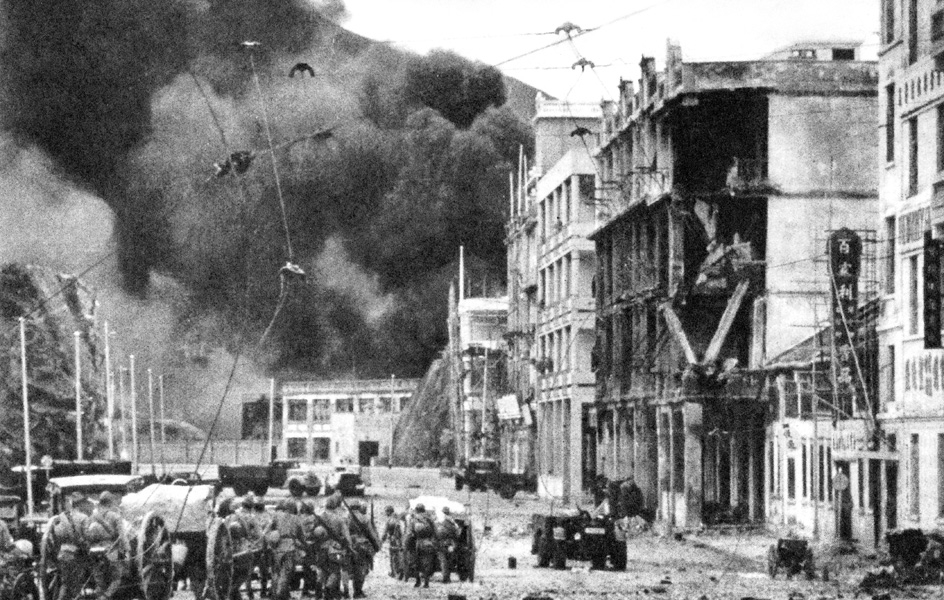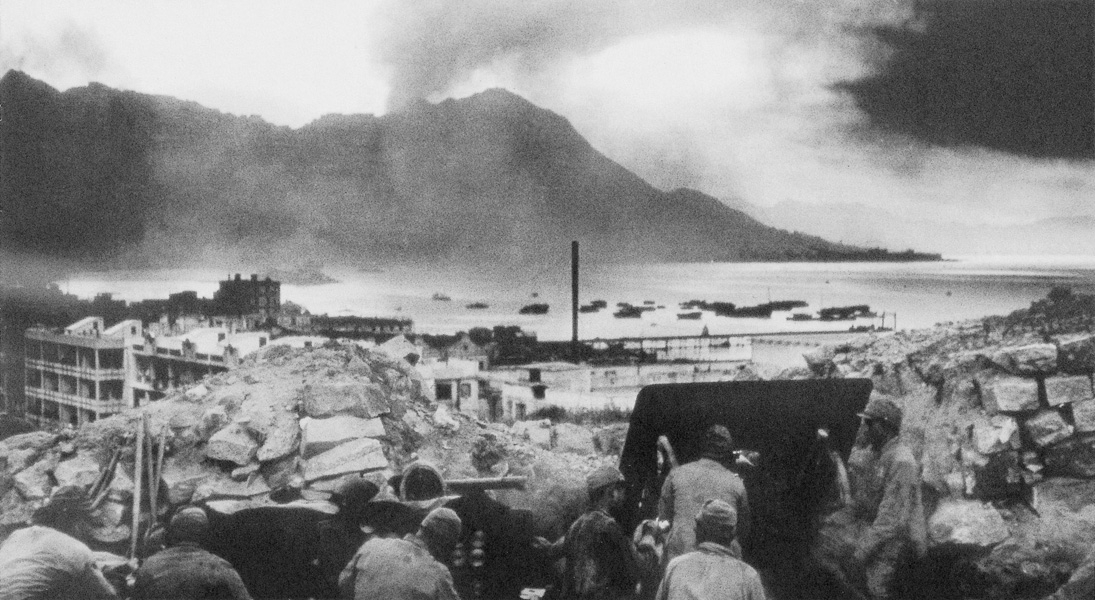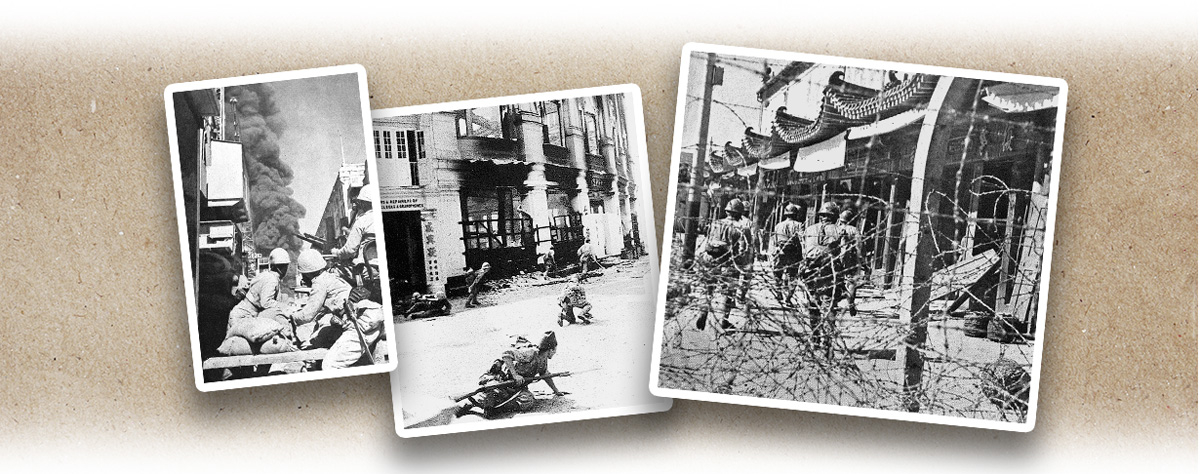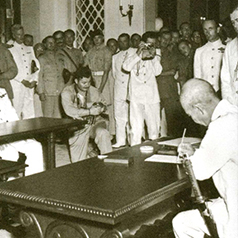The War of Resistance Against Japanese Aggression broke out on 7 July 1937. Hong Kong was in jeopardy after the Japanese captured Guangzhou (廣州) in October 1938. Britain tried to deter Japan from conquering Asia. It thus sent about 2,000 Canadian soldiers to guard Hong Kong in October 1941. They arrived in Hong Kong in November. However, the augmented force was still weak compared to that of Japan.
Lieutenant General Sakai Takashi announced attack on Hong Kong on 8 December 1941. The Japanese forces took the New Territories swiftly before advancing southwards. The British Commander C. M. Maltby decided to abandon Kowloon and ordered a retreat to Hong Kong Island. The Japanese forces landed on the northern shore of Hong Kong Island on the 18 December evening. The British forces were defeated in the fierce Wong Nai Chung Gap engagement with the Japanese and the latter occupied the Wong Nai Chung Reservoir, cutting off water supply for the British. Meanwhile, the contact between the British East and West Brigades defending Hong Kong Island was disconnected. The British strongholds were lost one by one and few heavy weapons were left with them after some unfruitful counterattacks in certain areas.
Seeing not even a slim chance of a successful defence, Maltby and the Hong Kong Governor Mark Young decided to surrender unconditionally. The East and West Brigades surrendered successively on the 25 December evening, marking the end of 18-days Battle of Hong Kong that ended in Japan taking over the whole Hong Kong. The atrocities committed by Japan during the war wrote a dark page in Hong Kong history.
|
|
Why could Japan capture Hong Kong swiftly? |
|
|
See answer below. |
Left: Hong Kong after a Japanese air raid; Right: Japanese soldiers taking a group photo next to a bombed plane after occupying Hong Kong’s Kai Tak Airport on 12 December 1941. The Japanese forces started the attack on Hong Kong by air bombing Kai Tak Airport and the British fleet on Hong Kong waters from 8 December 1941, destroying the already weak British air and naval forces in Hong Kong. Japan took the air supremacy and the command of the sea in Hong Kong.
Apart from air raids, the Japanese forces also launched fierce ground attacks. The photo shows the Japanese forces crossing Shenzhen River (深圳河) into the New Territories in the early morning of the air raids.
The British forces resisted vigorously, especially in the battle of Kam Shan position at the southwest of Shing Mun Reservoir when the two sides fought hand-to-hand. However, the British forces eventually retreated due to the disparity in power and soon the Japanese forces occupied the New Territories. The photo shows Pak Shing Street in Tai Po, New Territories, under Japanese occupation.
The British forces retreated southwards to defend Hong Kong Island when the Japanese forces took Kowloon on 13 December 1941. Lieutenant General Sakai Takashi used the Peninsula Hong Kong in Tsim Sha Tsui as the Japanese command headquarters. He planned to capture Hong Kong Island by bombing it from across the sea. The painting above is a work of the Japanese painter Yamaguchi Naoki. It depicts the Japanese attack on Hong Kong. The tallest building in the painting is the Clock Tower in Tsim Sha Tsui. As seen from Kowloon across Victoria Harbour, many places on Hong Kong Island were on fire at that time.
The Battle of Wong Nai Chung Gap depicted by a Japanese army painter. On 18 December 1941, the Japanese forces took more than 100 motorboats and rubber boats and forced to land on the northern shore of Hong Kong Island and engaged the British at Wong Nai Chung Gap soon afterwards. Japanese Commanding Officer Wakamatsu was seriously injured while J. K. Lawson, the Canadian Commander of the British West Brigade, was killed in the battle. The British was defeated in the end.
The Japanese forces advanced on North Point after landing on Hong Kong Island. The smoky area in the photo is where the oil tank of the Asiatic Petroleum Company Limited was located.
The Japanese artillery attacking the British strongholds from a hillside in North Point, Hong Kong Island.
The Japanese forces advancing in Hong Kong’s streets.
Although the British forces put on strong resistance after the Japanese landed on Hong Kong Island, they were eventually defeated. The Hong Kong Governor Mark Young and the British Commander C. M. Maltby decided to surrender on 25 December 1941. The photo shows the surrender ceremony in the Peninsula Hong Kong. Lieutenant General Sakai Takashi (second right in the back row) and three British generals are looking at Mark Young who is not in the photo. The day Hong Kong fell to Japan was regarded as the “Black Christmas” in Hong Kong history.
The Japanese holding an entrance ceremony led by Lieutenant General Sakai Takashi (first right) after the British surrendered.
The Japanese forces committed atrocities in Hong Kong. The incident at St. Stephen’s College in Stanley was particularly outrageous. In what later became known as the staggering “St. Stephen’s College Massacre” on 25 December 1941, the Japanese forces stormed into St. Stephen’s College, a temporary field hospital at that time. They killed at least 70 wounded soldiers, medical staff, and teaching staff. Some of their eyes were gouged out and tongues and ears were cut off. Some female nurses were raped and killed by the Japanese.
Sakai Takashi was arrested by the Nationalist Government after the war. The Nanjing War Crimes Tribunal (南京軍事法庭) sentenced him to death on 27 August 1946 after a three-month-long trial. He was executed by shooting in Nanjing on 30 September the same year.
|
|
Why could Japan capture Hong Kong swiftly? |
|
|
The United States stayed neutral before Japan attacked Pearl Harbour. At that time, Germany captured France and was about to attack Britain. As Britain could barely resist the invasion of Germany, it failed to ensure the safety of its colonies in the Far East, including Hong Kong. Before Japan invaded Hong Kong, Britain prioritised the protection of its homeland in its overall strategy. The British Chiefs of Staff Committee believed that “Hong Kong is not a vital interest and the garrison could not long withstand Japanese attack”, and “Militarily our position in the Far East would be stronger without this unsatisfactory commitment”. The Japanese land forces far exceeded the British in number when the war started. Also, the Japanese had more aircrafts and warships than the British. As the British did not have the power to protect Hong Kong before the war, the Japanese could capture Hong Kong in just 18 days. The British forces in Hong Kong consisted of soldiers from places such as Britain, India, Nepal, and Canada. There were also some Chinese. They knew that there was a huge disparity in power and they had no hope of winning, but they still fought bravely and sacrificed to defend Hong Kong. |
The images in this material are provided by Professor Lau Chi-pang and Professor Liu Shuyong (Photo 9) and Fotoe (Photos 1-8 and 10). Every effort has been made to trace the copyright holders and obtain permission to reproduce this material. Please do get in touch with any enquiries or any information relating to this image or the rights holder.





